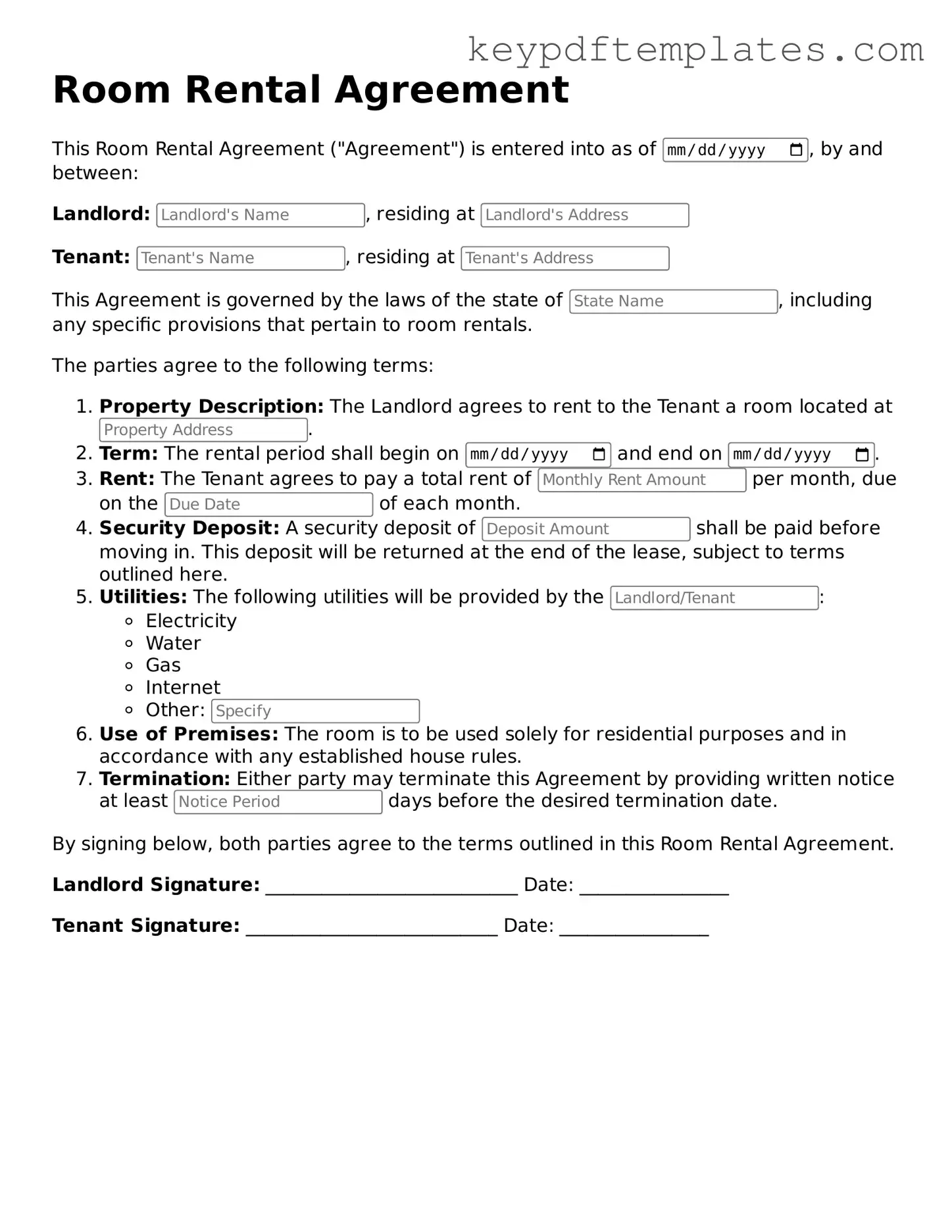Printable Room Rental Agreement Template
A Room Rental Agreement is a legal document that outlines the terms and conditions between a landlord and a tenant for renting a room within a property. This agreement specifies the rights and responsibilities of both parties, ensuring clarity and protection throughout the rental period. Understanding this form is essential for anyone involved in room rentals, whether as a landlord or a tenant.
Modify Document Online
